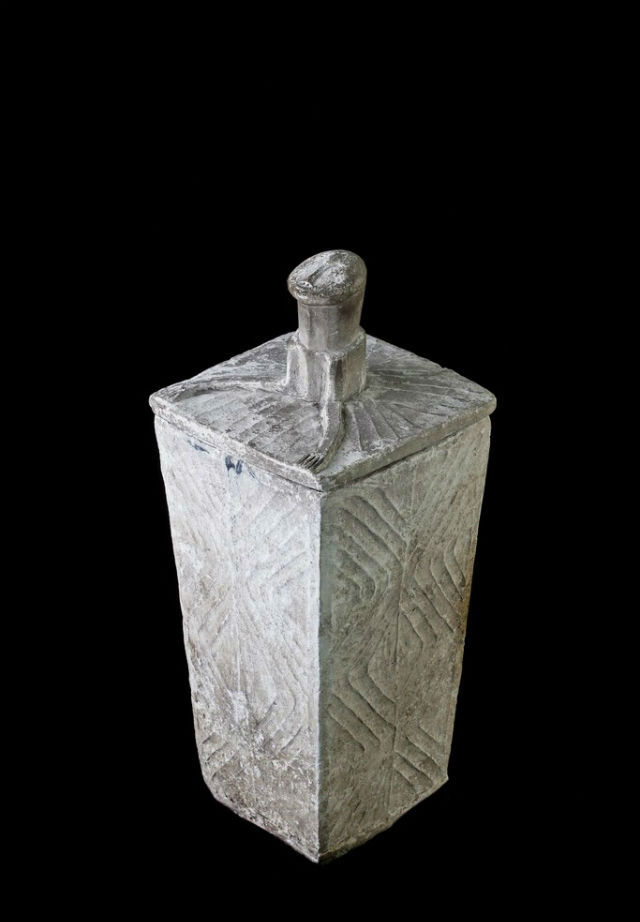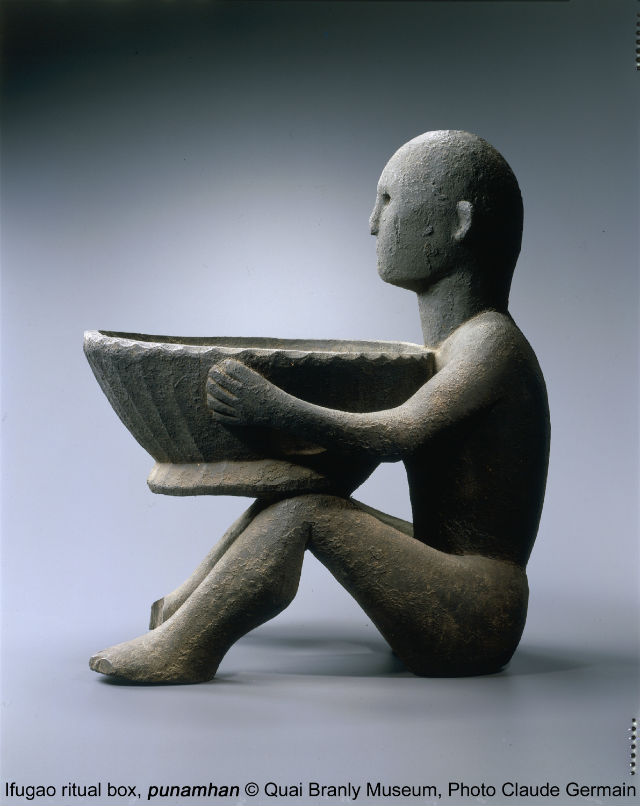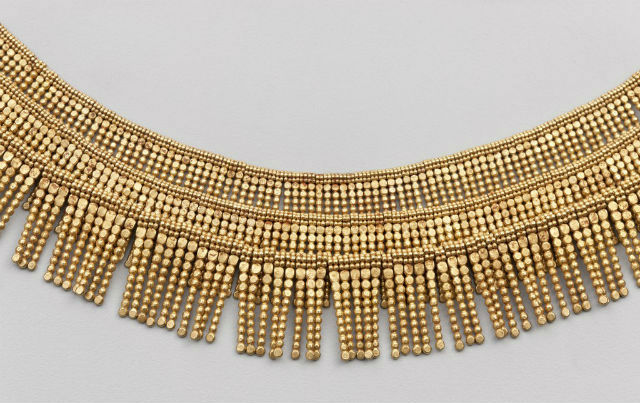As you rush through the last-minute holiday preparations, take a moment to daydream about Paris in April. From the Eiffel Tower, you walk down the banks of the Seine until you arrive at the Musée du Quai Branly. At the entrance of the museum, you are greeted by an archival photograph of rice terraces. As you go in, you are met by more than thirty bululs.

Maitum cover of secondary burial jar from The National Museum of the Philippines Photo by Neal Oshima
The rice divinities are followed by a section dedicated to the mumbaki, the Ifugao priests. Here you will see objects used for divination, healing, and other rituals. Next is a section featuring the "poetics of daily life"—spoons, baskets, and other objects that are needed for daily life in the Cordilleras. A section featuring the kadangyan showcases textiles, ornaments, gongs, special jars, and the hagabi, a bench symbolizing the kadangyan's high Ifugao status. The making of this bench is very elaborate and costly, explained anthropologist Corazon Alvina, co-curator of the grand exhibition of pre-colonial Philippine artifacts called "Philippines: Archipel des echanges" (Philippines: An Archipelago of Exchange). "This is one opportunity where we are not only encouraged to be proud of what we have but also gives us an opportunity to look at our ancestry, to look at where all of these impulses, artistic and creative, come from and perhaps we can use that knowledge to further our development as a people," Alvina said during a press conference on December 20. The exhibit will include ornaments from the highlands such as beads and necklaces, as well as warrior objects like axes, shields and other weaponry. Separate spaces feature artifacts from the Maranao highlands, the Maranao and Maguindanao sultanate, and Palawan. Across the textiles of Mindanao is a spectacular exhibit of gold artifacts. Before exiting, there will be pottery such as terracotta burial jars and urns used in Cotabato for secondary burial.

Cotabato secondary burial jar from Ayala Museum Photo by Neal Oshima
"Exchange is the core idea of the concept of this exhibition, and the notion of exchange could be translated in material, cultural, and commercial exchange," said co-curator Constance de Monbrison, who is in charge of the Insular Southeast Asia Collections at the museum. The exhibit runs at the Quai Branly Museum from April 9 (Araw ng Kagitingan) until July 14, 2013, which is also Bastille Day or French National Day. "The arts of the Philippines are little known in France and rarely shown in their entirety and diversity. Through these unique objects, each of which conveys a particular meaning, we pay homage to these multiple artistic expressions," Quai Branly Museum president Stephane Martin said in a press release. "Philippines: An Archipelago of Exchange" aims to provide a panorama of the Philippines' Austronesian roots and maritime culture prior to the arrival of the Europeans, the release said. The exhibit will feature art from various collections in the Philippines, United States, Belgium, the Netherlands, Spain and Austria. French Ambassador Gilles Garachon said they expect around one million visitors during the three-month exhibition. "This will be an exceptional occasion and I think maybe one of the most important exhibitions abroad ever of Filipino art, and an exceptional occasion to discover this wonderful wealth and heritage of the Philippines," he said at the press conference.

Philippines: An Archipelago of Exchange will feature art from various collections in the Philippines, United States, Belgium, the Netherlands, Spain and Austria.
Garachon added that the exhibit is one way of strengthening Franco-Philippine relations in culture and the arts, one of the core areas of cooperation highlighted by President Benigno Aquino III and French Prime Minister Jean-Marc Ayrault during the latter's visit to the Philippines last October. "This visit was very special," Garachon said, as "no member of the delegation knew about the Philippines prior to the visit. "At the end of the visit they told me it was an absolutely a wonderful country, and they don't understand very well why European countries are not more present in the Philippines. This is what it's all about. We have to understand each other much better to exchange more," he said. Garachon said the exhibit promotes understanding through culture, and hoped that not only the French, but other European people will be able to see the exhibit. Representing DFA Secretary Albert del Rosario, Undersecretary of Foreign Affairs Laura del Rosario said the exhibition marks a first in the relations between France and the Philippines. "It will put the Philippines on the cultural map and radar of France," she said. Apart from the artifacts, parallel activities will also be held, like workshops, traditional Filipino dances, language classes, exhibition of classic and contemporary Filipino films, demonstration of Filipino cuisine, and traditional martial arts. There will also be forums meant to provide avenues for exchanges of ideas on Philippine and French culture.

Surigao tutubi collar from Bangko Sentral ng Pilipinas Photo by Neal Oshima
Outside the museum, there will also be side events such as "Alliances en resonance," which features music, photography, and cinema, at the Fondation Alliance Francaise in Paris. Meanwhile, 22 Filipino artists will participate in an exhibit in Southern France co-curated by French artist Herve di Rosa and Filipino artist Manuel Ocampo. The Philippine Embassy in Paris will also organize a Filipina Fiesta. "As we move as a nation towards economic prosperity, there is truly no better time for our cultural heritage to come into sharp focus for the world to see," said Mariles Gustilo, director of Ayala Museum. There will also be an exhibit catalog published in French and English. "Not everybody can go to Branly, and not everyone can go to Paris. So we thought it would be a good idea that the Philippines would have a copy of the catalog in English," said Senator Loren Legarda, adding that the catalog may be translated to Filipino later on. The catalog will be given for free to state universities and colleges. Legarda also suggested that a video of the exhibit be made available online. The exhibit is held with the support of the National Museum, the Bangko Sentral ng Pilipinas, and the Ayala Museum.
— BM, GMA News 






